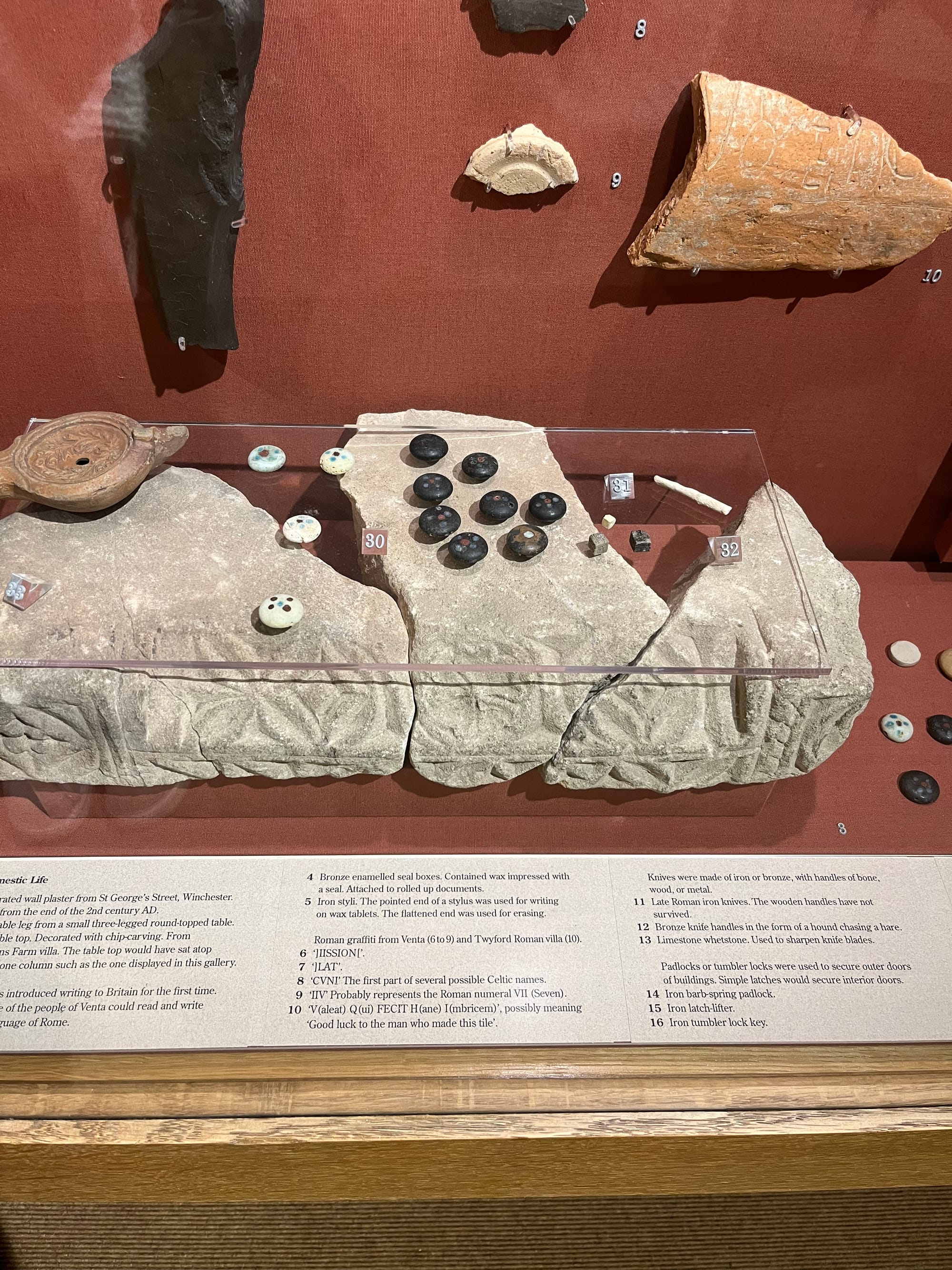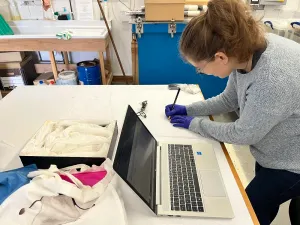Today marks National Dice Day – join us as we roll through history, exploring the role of dice in Roman games with Winchester City Museum volunteer, Katie Wright.
On the Roman and Iron Age floor of Winchester City Museum, we showcase day-to-day items used by those living in Roman Winchester. These include a gaming set of 26 glass counters, a bone dice and a coral stick, which were found in a grave at Lankhills Roman Cemetery.
Two games that the Romans played with dice were called Tali and Tesserae. Tali used four dice – the highest score was achieved when each die rolled presented a different number. Tesserae was played with three dice, and in this game, the highest score was achieved once three sixes were rolled. Bad scores were often regarded as ‘dogs’ and high scores were regarded as ‘Venus’ after the Roman goddess of love.

An interesting story that involves the use of dice and gambling is that of Emperor Claudius in Seneca’s Apocolocyntosis. Emperor Claudius, who led the invasion of Britain in AD 43, and whose coin is displayed in the City Museum Roman coin case, was notorious for his gambling. Thus, in Seneca’s political satire, Claudius is punished by the gods and is condemned to shake a box of dice with no bottom, so that every time he tries to throw the dice they fall out and he must search the ground for them!




